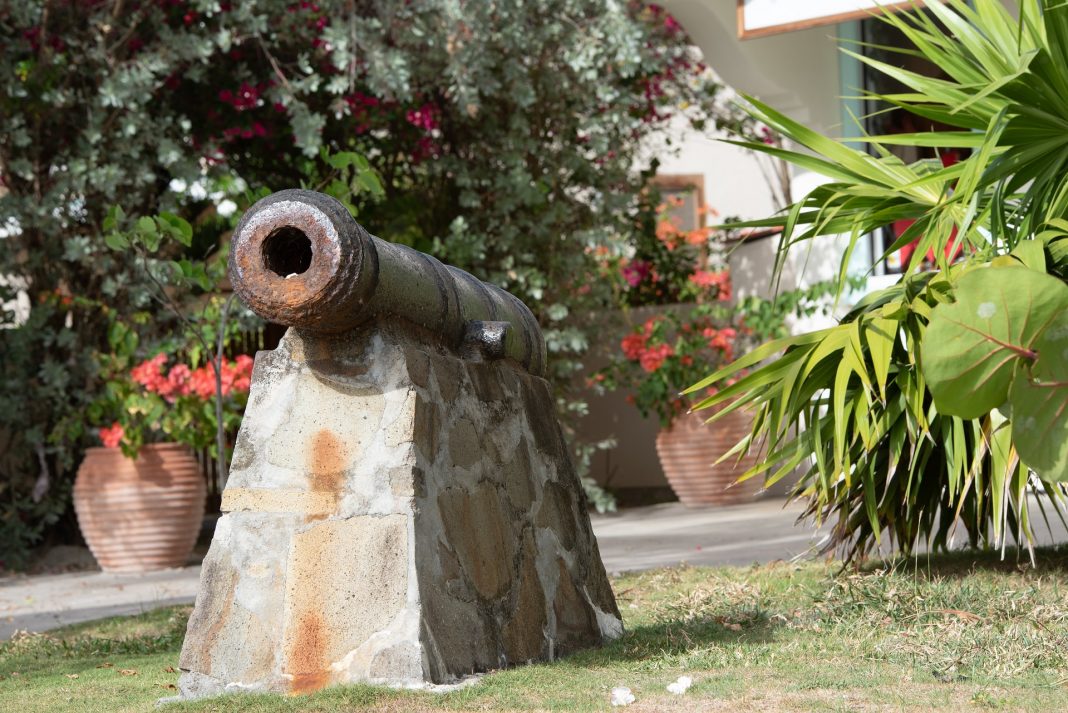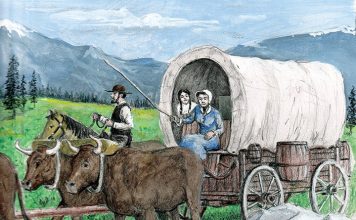 |
|
| Issue #99 • May/June, 2006 |
We Americans like to do things in a big way. Big houses. Big cars. Big boats. And, yes, big guns.
There are good arguments for all this, of course. The big house accommodates more guests. The same is true of large cars and boats, both of which are also more “crashworthy” if worse comes to worse. And anyone who has ever been faced with something large and dangerous at the muzzle end will tell you that a big gun is far more reassuring than a little one at such moments.
And yet, there is a strong argument for downsizing. A great many of our readers have improved their quality of life by moving from a big place in the city to a smaller home in more rural America. Smaller cars and boats are more economical, more convenient, more nimble, and often more fun to pilot. Similarly, smaller firearms are handier, more convenient, produce less fatigue when carried afield all day, and are often faster and more efficient to deploy in close quarters such as thick brush.
The first thing to consider is power level. Some situations demand more powerful guns than others. If you live in “big-bear” country, you definitely want a very powerful rifle. Most professional hunting guides would consider the 7mm Remington Magnum or .338 Winchester Magnum to be the absolute minimum caliber for facing grizzly or polar bear. If your backwoods digs are on the African continent and nasty-tempered Cape buffalo or rampaging elephants are in your backyard, you actually NEED an elephant gun in the .375 Magnum or larger class. Indeed, the game laws of most African countries specify the .375 Holland & Holland Magnum as the minimum caliber for the humane hunting of the pachyderm. Fortunately, most who read this publication have much smaller wildlife pests to contend with.
Any gun shop owner can tell you how many neophyte hunters come in asking for a .300 Magnum or 7mm Magnum rifles with which to hunt deer. Unless the country is very open and extreme long shots are the rule—in which case the flat trajectories of these powerful cartridges start to make sense—you simply don’t need this power level to cleanly kill anything smaller than a large elk or a moose. Indeed, any hunting guide or conservation officer can tell you that every day, moose and elk are cleanly killed by hunters with run-of-the-mill .30-06 hunting rifles. Loaded with the proper bullet, a .30-06 or even .270 is ample for any non-dangerous game on the American continent, not to mention the common black bear.
|
Shotguns? I’ll agree that the 12-gauge is the most versatile shell. At the same time, that’s a lot of gun for some people. The legendary shotgun expert Francis E. Sell was a big fan of the less powerful 20-gauge, and found that with the right load, it was ample for ducks and geese, let alone upland birds. However, that was in the days of lead shot. The steel shot mandated long ago for waterfowl hunting (to keep spent lead out of the water and out of the bellies of living birds) does not penetrate as well as lead, and this has caused waterfowl hunters to increase their firepower. The small 20-gauge shell is rarely seen in duck blinds today, and the standard 12-gauge 2¾” shell, substantially more powerful than the 20, has given way to the 3” Magnum and now the 3½” Magnum, with many serious duck and goose hunters preferring the massive 10-gauge Magnum for pass shooting on the waterways. This is one area where power cannot be sacrificed, simply because of the steel shot rule.
On the other hand, lead is legal for hunting pheasants, partridge, turkey, and so on, and of course for deer in jurisdictions where the fish and wildlife laws forbid rifles and allow only shotguns for white-tail hunting. For upland birds, it’s hard to argue with Sell’s logic that at reasonable ranges, the lighter, faster-handling 20-gauge will get you on the rising bird more quickly than a heavier 12-gauge shotgun. “Deer slug” shotgun ammunition has improved by leaps and bounds. Remington’s all-copper sabot round has proven to be a deadly deerslayer in the 20-gauge size. Thus, with the exception of waterfowl hunting, the shotgunner’s needs can be better met than ever with something smaller than the big, traditional 12-gauge.
Rifles
In the last generation, we have seen a sea change in sporting rifle configuration. When I was young, the Winchester Model 70 Featherweight and the Remington Model 600 carbine were about your only choices if you wanted a lightweight but still very accurate bolt-action hunting rifle. Today, the Featherweight is still available, and Remington’s Model 7 is the best seller in this category. I’ve been very pleased with Ruger’s equivalent, the Model 77 Compact; the sample I tested would shoot three rounds of premium-grade .243 hunting ammunition into one inch at 100 yards. Yet these delightfully accurate rifles, delivering the same power as their bigger brothers when chambered for .308 Winchester and similar cartridges, are as easy to carry all day as a much less powerful Winchester Model 94 lever action, chambered for the shorter-range .30-30 cartridge.
Often called “mountain rifles,” these lightweight bolt guns have kept pace with technology developed for hikers. Lighter boots, lighter packs, lighter tents, lighter everything. Another technological parallel between the sports of riflery and hiking is improved weather resistance. Today’s telescopic sights for rifles are more secure against the elements, keeping their nitrogen filler inside and reducing the likelihood of fogging. The traditional wooden stock absorbed moisture and warped, sometimes pressing against the rifle’s barrel and altering point-of-bullet impact. Today, numerous space-age materials including Kevlar have largely replaced wood on working high-tech hunting rifles. They do not change dimensions with temperature or inclement weather. Rust was always the bane of sporting arms carried afield in fair weather and foul; today, stainless steel barrels and actions make rust much slower to accumulate, though stainless is by no means rustproof.
Rifle barrels tend to be shorter nowadays. A carbine, or short-barreled rifle, has historically been seen as a short-range firearm. The reason a longer barrel was equated with greater accuracy was largely that in the old times, the rifle mounted iron sights. “Sight radius”—the distance between front and rear sight—was a definite element in determining how much accuracy a rifleman could deliver downrange. The greater the distance between rear sight and front, the less aiming error there was as perceived by the human eye. The easiest way to increase this accuracy was to increase the distance between the sights, and in turn, the easiest way to do that was to lengthen the barrel, since the front sight was located just above and behind the muzzle.
Today, optical sights are more the rule than the exception. This means that the sight radius advantage of a longer rifle barrel is eliminated from the equation. In Iraq or Afghanistan, if the soldier’s rifle carries the issue red dot electronic optical sight by Aimpoint, his accuracy will be exactly the same whether he is firing an M4 with a 14” barrel or an older M16 with a 20” barrel, all other things being equal.
|
Your precision rifleman knows that barrel length has little to do with accuracy anymore. To put the next bullet through the same hole as the first, what is important is that the barrel not change its dimensions as it heats up, and that it not vibrate differently than it did with the last shot. With this recognized, we are seeing a trend toward shorter but thicker and more rigid barrels. It is as true with the lowly .22 rimfire sporting rifles as it is with more powerful specimens.
For example, two of my favorite .22 rifles are produced by Ruger. One is the bolt action Model 77/22. Approximately the dimensions of a high-powered hunting rifle, it is an accurate gun that will put every round of match-grade .22 into an inch at a hundred yards.
The other is a Ruger 10/22 semiautomatic that has been accurized by Kay Clark-Miculek at Clark Custom Guns into what that grand old gunsmithing firm calls their Squirrel Rifle format. In addition to an excellent trigger job and some other features, Kay fitted it with a Douglas match-grade barrel. So modified, it too will put Eley Rifle Match .22 ammo into a one-inch group at a hundred paces. The Douglas barrel is thick, to dissipate heat and vibration, and would normally be altogether too unwieldy for a comfortable day of carrying in the woods, and hopelessly muzzle-heavy if trying to track a running rabbit or squirrel. However, one design element changed everything: Kay expertly fluted the barrel. The flutes, trenches milled away from the steel, run almost the length of the barrel. This reduces weight sufficiently to make the gun comfortable to carry, and give the customized rifle what I can only describe as perfect balance. The fluted match barrel is only 16¼-inches long, and the overall rifle is much shorter and handier than my standard, out-of-the box Model 77/22. For those who want this level of accuracy with something even lighter, .22 match rifle barrels made of carbon fiber are becoming all the rage among small-bore shooting enthusiasts.
The fluted barrel principle works with more powerful rifles, too. Let’s look at two AR15 semiautomatic rifles, caliber .223, one of mine and one I bought for my younger daughter.
My rifle is a Colt Match Target H-BAR, an acronym that stands for “heavy barrel.” It weighs well over eight pounds with its 20” barrel. My little girl tried it when she was 11 years old, and it was just too cumbersome and muzzle-heavy for her to aim steadily from a standing position. It’s an accurate beast, though, putting every shot into an inch at a hundred yards if I use good ammunition.
For Justine’s 12th birthday, I had a custom AR15 built for her. The Assault Weapons Ban was in force, and I couldn’t buy a telescoping stock to fit her short arms, but I had one on a pre-ban Colt AR15 so I used that “lower,” or frame, as the basis for her gun. I sent it to the custom shop at Olympic Arms in Washington. They built an “upper” for her that included a fluted match grade barrel 16¼” in length. (16” is the legal limit for rifle barrels, without a special $200 license from the Bureau of Alcohol, Tobacco, Firearms and Explosives.) The Olympic upper was in “flat-top” configuration, with a Picatinny Rail on the top of the frame that allowed wide options as to sight attachments. We chose the C-More, a top-quality red dot electronic sight that is extremely compact and weighs only a few ounces. Justine’s custom AR15 came in at six pounds on the nose. It will deliver one-inch groups at 100 yards with Federal Match .223 ammunition.
Depending on the ammunition used, the .223 Remington cartridge for which most AR15s are chambered can lose a lot of its power out of a short barrel. However, most tests indicate that the wounding power of the .223 is not seriously compromised until the barrel is cut back to 14”, the length of an M4 barrel. With a 16” barrel, it still seems to deliver the goods.
|
My daughter’s rifle is dramatically lighter than mine, and distinctly shorter and faster handling. It delivers the same high level of accuracy. Being optically sighted, it loses nothing in terms of sight radius. Justine is now a tall, athletic young woman of 20 and can easily shoot my heavier rifle, but still prefers her own lighter, handier AR15. I don’t blame her. It’s the more practical of the two AR15s by far.
Firearms historian Gene Gangarossa, Jr., wrote The Story of the Carbine in the 1999 annual Guns Illustrated. He closed with these words: “Whenever a soldier sits in the confined spaces of an assault helicopter or in an armored personnel carrier or on horseback, or whenever a hunter stalks game at close quarters in dense brush, a short, fast-handling weapon will appeal more than a longer, clumsier one. In fact, as long as anyone needs or wants a small, lightweight shoulder arm, and is willing to sacrifice a small bit of accuracy and striking power in exchange for that handiness, the carbine will remain a favorite for military and civilian duty alike.”
Shotguns
When I was a young hunter, shotgun barrels came mostly in three lengths. If you had a wide-open cylinder or improved cylinder choke swaged into your gun barrel for hunting partridge, let’s say, the industry-standard length for such a barrel on a hunter’s shotgun was 26”. If you had a modified choke—a little bit tighter, for shooting pheasants when dogs ranging well ahead of you put up the birds—Remington and Winchester and Savage, et. al., would manufacture your shotgun with a 28” barrel. If you bought a duck gun with a full choke, the tightest constriction designed to keep the pellets together in a bird-killing pattern 40 yards away over the decoys on the water, you could expect its barrel to be 30” in length. Some waterfowl guns had “extra-full” chokes and even longer barrels, 32” or even 36”.
The longer the barrel, the heavier the gun. The longer the barrel, the more the shotgun’s point of balance moved forward, and the slower and “less lively” it was in your hands as you tracked a bird. The longer the barrel, the slower it was to maneuver the gun into position and poke its ponderous barrel out of the confines of a duck blind.
In those days, a hunter might own many interchangeable barrels for one shotgun. He or she would purchase, say, a Remington 870 pump gun and a 26” improved cylinder barrel for woodcock, a 28” modified tube for pheasant, and a 30” full-choke barrel for duck hunting. There might even be a 20” to 24” barrel, often complete with rifled sights, bored for the use of rifled slugs during deer season. Many hunters still follow that pattern today.
However, interchangeable choke tubes changed the face of the shotgun game many years ago. With a twist of the wrench that comes provided with the gun, the same gun and barrel are capable of the versatility that once required four shotguns, and later required four separate shotgun barrels. You’ll notice that when modern hunters take advantage of this technology, they generally buy a shotgun with a shorter barrel. They appreciate the lighter weight and the faster handling.
|
The guns of today’s turkey hunters are a good example, because turkey hunting is hugely popular nowadays. Thanks in large part to the efforts of the National Wild Turkey Federation, there are more of these stately birds living in America than ever before, including the time of the Pilgrims. It is particularly satisfying to sit down to a traditional turkey dinner at Thanksgiving or Christmas when the centerpiece is one that you have harvested from the forest yourself.
All the big makers offer designated “Turkey Guns,” and most of these shotguns seem to mount a 24” barrel. The full choke is just as important with big toms as with ducks; though they’re taken on the ground instead of in the air, the turkey is often encountered at distances of 40 yards, and the target is the head to spare as much meat as possible. To get maybe half a dozen #4 or #6 birdshot pellets into its head and neck at that distance, you need a tightly constricting choke. With modern shotguns, this means that you’ve taken fully half a foot of the length of your formerly cumbersome full-choke shotgun.
As noted in the opening paragraphs, the careful hunter who stays within his or her effective range can fill the roasting pan with wild turkey using a 20-gauge instead of the bigger 12.
My favorite 20-gauge shotgun is Remington’s Model 1100 gas-operated semiautomatic in its Special Field model. With straight, English-style stock and 21” barrel with interchangeable choke tubes, this remarkably soft-kicking shotgun weighs little more than six pounds. It’s refreshingly handy for a day in the hunting fields, and is available in a “youth model” with shorter stock for hunters of smaller stature.
Handguns
Advances in Titanium and Scandium frame construction, pioneered by Smith & Wesson, and polymer frame construction of semiautomatic pistols as pioneered by Heckler & Koch and popularized by Glock, have given us lighter handguns than ever before.
This is sometimes a blessing and sometimes a curse. Smith & Wesson manufactures two cases in point, the Model 340 Sc and the Model 329 PD. The 340 is an 11-ounce .357 Magnum, and the 329 is a .44 Magnum that weighs a mere 26.5 ounces. With full-power Magnum ammunition, they each deliver recoil that is nothing less than savage. This is not conducive to getting the practice you need to deliver fast, accurate hits reflexively in a danger situation.
That’s not to say that you can’t comfortably get a lot of power into a small handgun package. If you’ve kept your back issues of Backwoods Home Magazine, you’ve seen articles on two guns that deliver the same substantial power levels in approximately the same size packages, but with much less-felt “kick” because of their all-steel construction. Ruger’s SP101 is a five-shot snub-nose .357 Magnum with rubbery “live-feel” grips, and is proportionally much easier to shoot swiftly and accurately than a similar but lighter revolver with the same full-power ammunition. The reason is that with all-steel construction, it weighs about 25 ounces. It’s less than a pound heavier than the lightest .357 revolver, but HUGELY more “shootable.”
|
In the Smith & Wesson .44 Magnum line, I found the super-light Model 329 very, um, interesting to shoot with full power-ammo, but just no fun at all. In the Smith & Wesson catalog, however, I head instead to the page that shows the Mountain Gun. It has been produced in stainless as the Model 629 Mountain and in blue steel for Lew Horton Distributors as the Model 29 Mountain, and in either configuration features a tapered four-inch barrel, and radiused front edges of the cylinder. Weight is reduced noticeably over that of a standard Smith & Wesson .44 Magnum with heavy straight barrel, and the gun still weighs less than a pound more than the lightest .44 Magnum in the S&W catalog, but once again, we have an all-steel gun that is dramatically more shootable and therefore more practical overall. Yet, unlike a long-barrel hunting revolver, it is the size of some police service revolvers and something you can keep on your hip all day in a backwoods or working cattle ranch environment.
I’ve killed game at as far as 117 yards with a 4” barrel Smith & Wesson .44 Magnum, and find it more than adequate for my own outdoor needs. But let me refer you to far more experienced outdoorsmen than myself. Elmer Keith was perhaps the most famous hunter/gun expert of the 20th Century. He once humanely killed a deer, which had been wounded by a client he was guiding, at a range of 600 yards with his S&W .44 Magnum. His daily-carry gun was that Model 29 .44, with a 4” barrel. Keith’s protégé, Ross Seyfried, wore an identical Smith .44 on his hip in his first career as a working cattleman, day in and day out. Seyfried went on to become a national pistol champion and a famous big game hunter and guide on two continents. Both stand as proof that a 4” barrel .44 Magnum revolver will “get you through the night” in the 24/7 world of the backwoods.
Now, your needs may not indicate a handgun as powerful as the .44 Magnum. You may see bears only in the zoo, and have no large livestock that might occasionally run rampant and have to be euthanized, right now, with a powerful sidearm. Rural citizens, like city dwellers, mostly keep handguns for personal defense against threats that tend to arrive on two legs instead of four. An anti-personnel sidearm doesn’t need the level of “Magnum Force” that Elmer Keith needed on the day he had to shoot, from back to front, a maddened horse that was dragging him to death.
Let’s say that we’re looking at a .38 Special through .357 Magnum revolver, or a semiautomatic pistol in calibers ranging from 9mm Luger through .40 Smith & Wesson, .357 SIG, and up to .45 ACP. With modern ammunition, designed for the bullets to perform even at reduced velocity from short barrels, a compact sidearm doesn’t handicap you with power reduction as much as it would have 20 years ago.
Let’s say you’ve decided that a light-kicking 9mm pistol will be adequate for your needs, and that you’ve settled on the excellent SIG-Sauer pistol, a brand noted for quality and reliability. The largest of their standard models is the P226. This is the full-size, 16-shot service pistol used widely by members of the NYPD and the Chicago PD, and standard issue for the Navy’s SEALs. NYPD issues the 124-grain +P Gold Dot hollow-point 9mm cartridge by CCI Speer, and has found it to be satisfyingly powerful “on the street.”
But maybe you’d like something a little shorter, with a smaller butt that will also bulge less under your clothing when you lawfully carry it concealed. You might go down a notch in size to the SIG P228, as recently chosen for standard issue to the troopers of the New Jersey State Police. They like that size pistol because it’s compact enough for concealed carry by their troopers off duty, and by plainclothes investigators. They use the exact same 9mm ammo as NYPD, and report the same high satisfaction with its performance on the street. The P228 holds 14 cartridges.
You want something even smaller, and you don’t expect to get into the high-volume running gunfights that are potential daily occurrences for city cops or state troopers alike? Consider SIG’s P239. Even smaller than its above-named big brothers—SIGARMS describes the P239 as “personal size,” an apt term—it is thin and flat, thanks to a slim single-stack magazine that allows a proportionally thinner grip. The price you pay for that, total cartridge capacity of nine shots, is not likely to matter in typical situations where private citizens need to employ handguns in self-defense. Yet this smallest SIG 9mm is virtually as easy to shoot well as its big brother, the P226.
Bottom line: Modern technology has allowed us to “git ‘r done” with smaller, lighter, handier firearms. For working purposes, that makes it more likely that a suitable firearm will be with us when we need it, instead of left behind out of reach because it was too big and too heavy to carry. For sporting purposes, it makes the trip afield that much less tiring and proportionally more enjoyable.



















